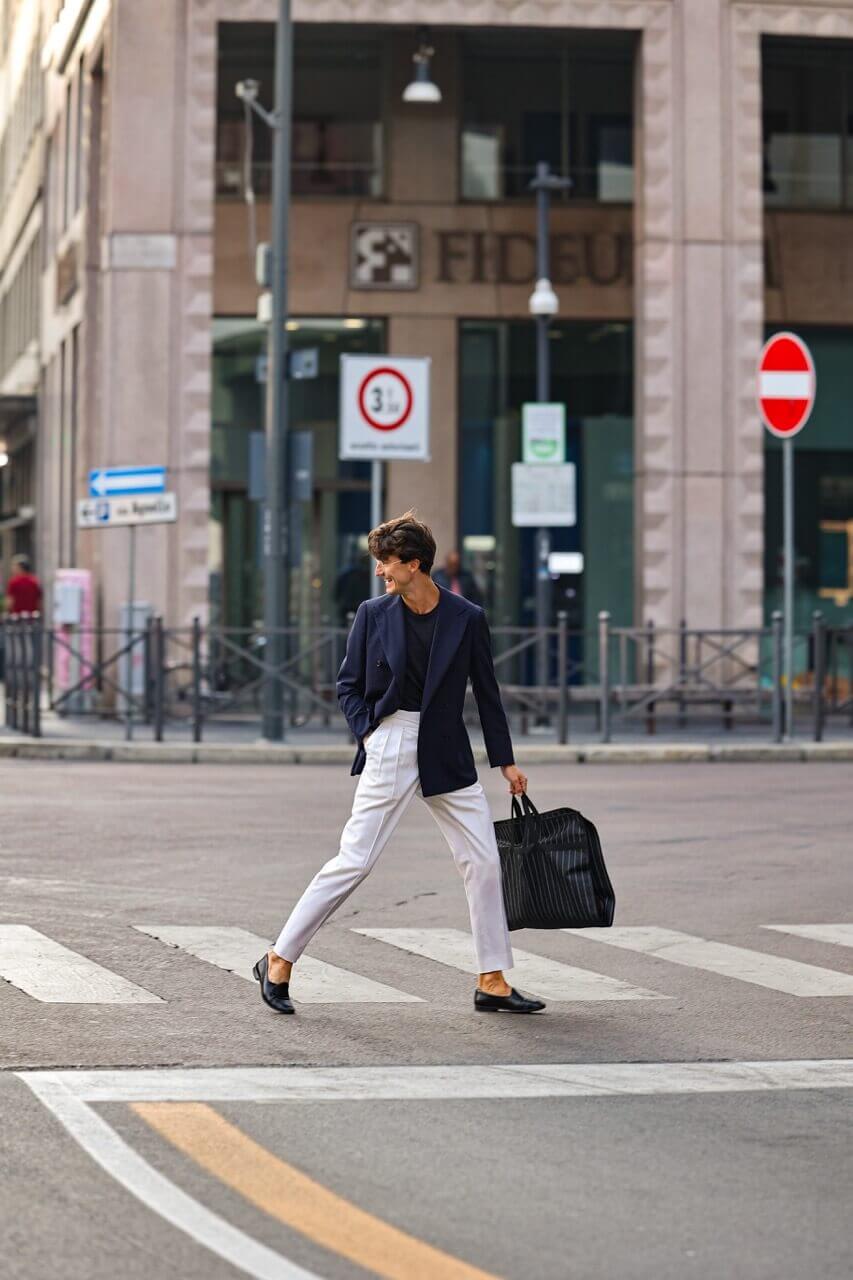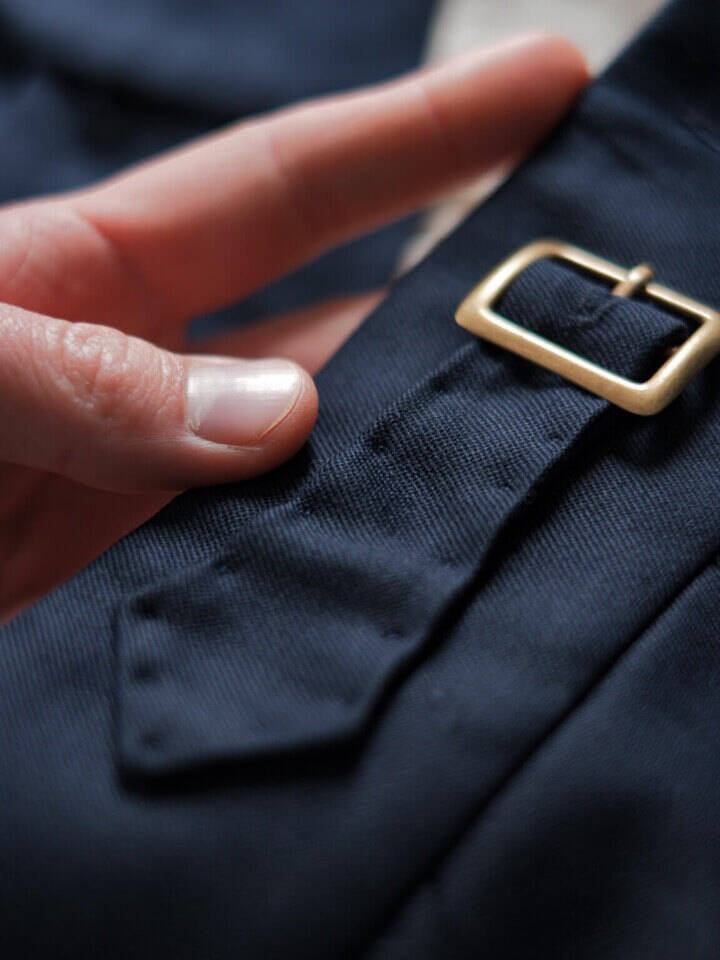Trousers with double pleats and a high waist are like the cherry on top of my outfit. They help accentuate the waist and create a balanced silhouette that flatters the figure. Although they might seem simple at first glance, choosing such trousers involves many details like length, pleat style, fabric, and more. Let’s delve into these aspects to make it easier for you to pick similar trousers in the future.
Key Points
These trousers usually feature a high waist and always have pleats. Pleats can vary – they could be inward or across. Often, they don’t have belt loops, but they might have side adjusters or a waistband with buckles for size adjustment. The waistband width of such trousers is usually 5-6 centimeters. If you prefer wearing a belt, it’s better to opt for trousers with a 4-centimeter waistband. The waistband model can vary, and at a tailor’s, you can find a wide range of models that will suit your needs.
Why it's hard to find such trousers in mass-market brands
Trousers with a high waist and pleats require extra fabric to ensure a good fit around the waist and hips. In the trousers I prefer, 5 centimeters of fabric are added to the main pleats, and 3 centimeters are added to the side pleats. This means that for each leg, 8 centimeters of additional fabric are needed, and for the trousers, it’s 16 centimeters. Now imagine if mass-market stores could add such an amount of material when they produce more than a thousand units. I’ve pointed this out multiple times, but nowhere have I seen such an addition of extra fabric. And if you go to a tailor’s, you need to discuss it with the tailor. Each tailor has their own vision, and it’s important to communicate and discuss the waistband model. Good tailors usually explain and advise you on this.
How to wear them right
This trouser model is versatile and can be paired with different types of footwear and tops. I’ve worn them with loafers, sneakers, and even Birkenstocks in warm weather. The tops can vary from shirts to turtlenecks, polo shirts, or basic tank tops. Can you wear them with a jacket? Of course. However, you need to consider what shoes you’ll be wearing. If you’re opting for loafers, you can wear a jacket, but if you’re going for Birkenstocks, it’s better to skip the jacket.
Preferred colors
My first pair of trousers will be dark blue since it’s a versatile and easily combinable color. The second color I’ll choose could be grey, dark brown, or olive, depending on what items I already have in my wardrobe. The third pair will be in a milky color – such trousers are elegant, light, and not too flashy. Will I have black trousers? Yes, I have them, but they came as the tenth or even later pair. And those were made from black linen; I’m not sure if I’d make them otherwise.

Preferred materials
My trousers are usually made from wool, cotton, or linen. Wool trousers make up about 65-70% of my trouser wardrobe, while the rest is divided between linen and cotton. I want to debunk an important myth. Wool can be very lightweight, and sometimes it’s more pleasant to wear in summer than cotton. So don’t think that wool is only for cold weather. Linen trousers are a great choice for summer – they are very light and comfortable. Cotton is not as classic, but you can wear it with a jacket; you just need to pay attention to the cut of the jacket and the trousers themselves. It’s also important what shoes you choose.
My opinion
Trousers with double pleats and a high waist are one of my favorite items in my wardrobe. I love making them for myself, and I always recommend them to the gentlemen and clients we work with. They are a versatile piece that goes well with many items in the wardrobe, and thanks to the high waist and pleats, they accentuate the figure, making them very comfortable trousers. This trouser model is currently very trendy in classic style, and I believe it will remain relevant for many seasons to come, and we will continue to wear them.
I’ve tried to answer all your questions, and by reading this article, you’ll be able to get the answers and choose good trousers for yourself.
Fact in the Spotlight
Many individuals write that pleats serve purely decorative purposes, but that’s far from true. From a medical standpoint, they provide additional freedom, which is very beneficial for men.
Quote of the Week
Be yourself; all other roles are occupied
Oscar Wild
That’s all for today. See you on Saturday next week!
Yours sincerely, Anton Masko













